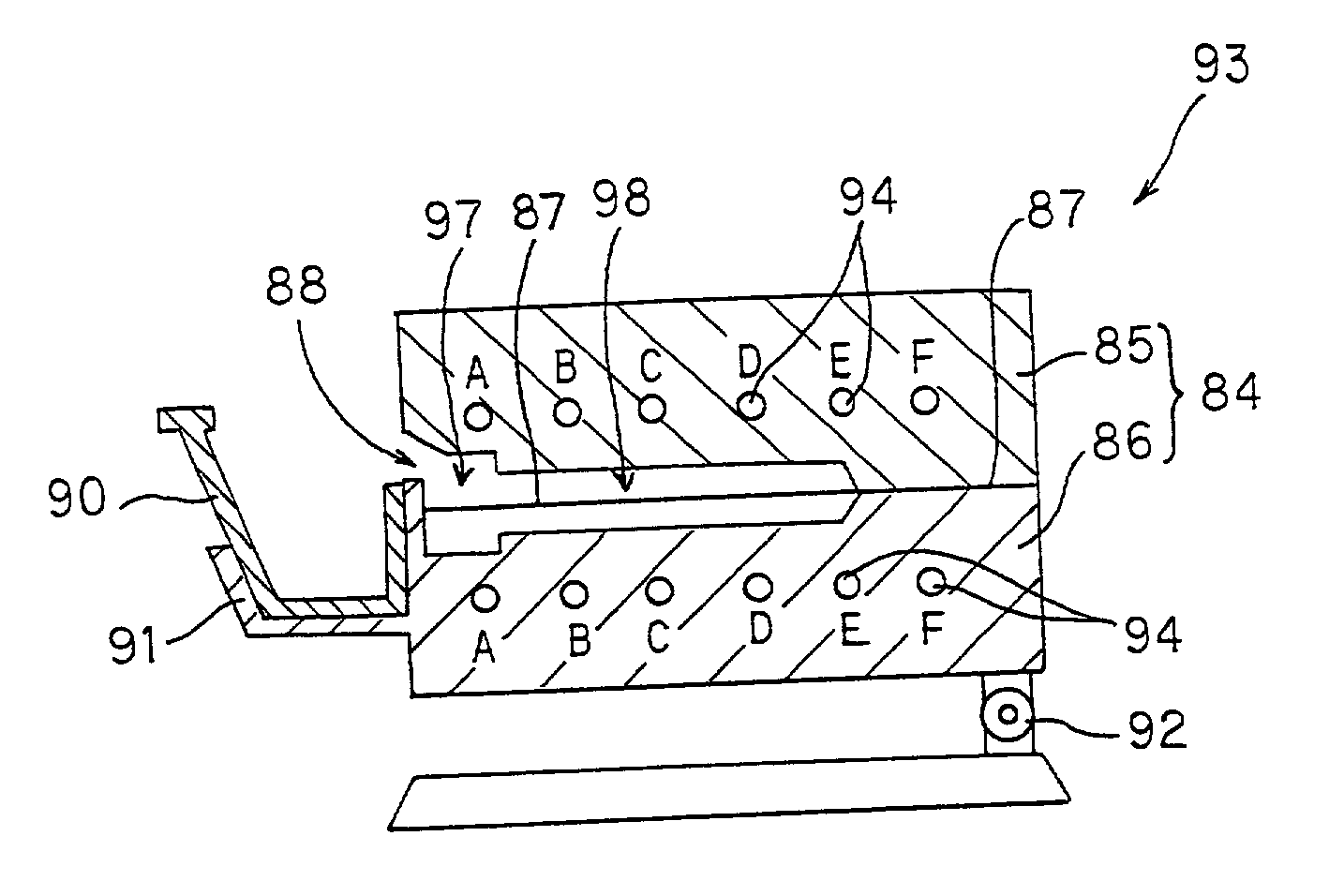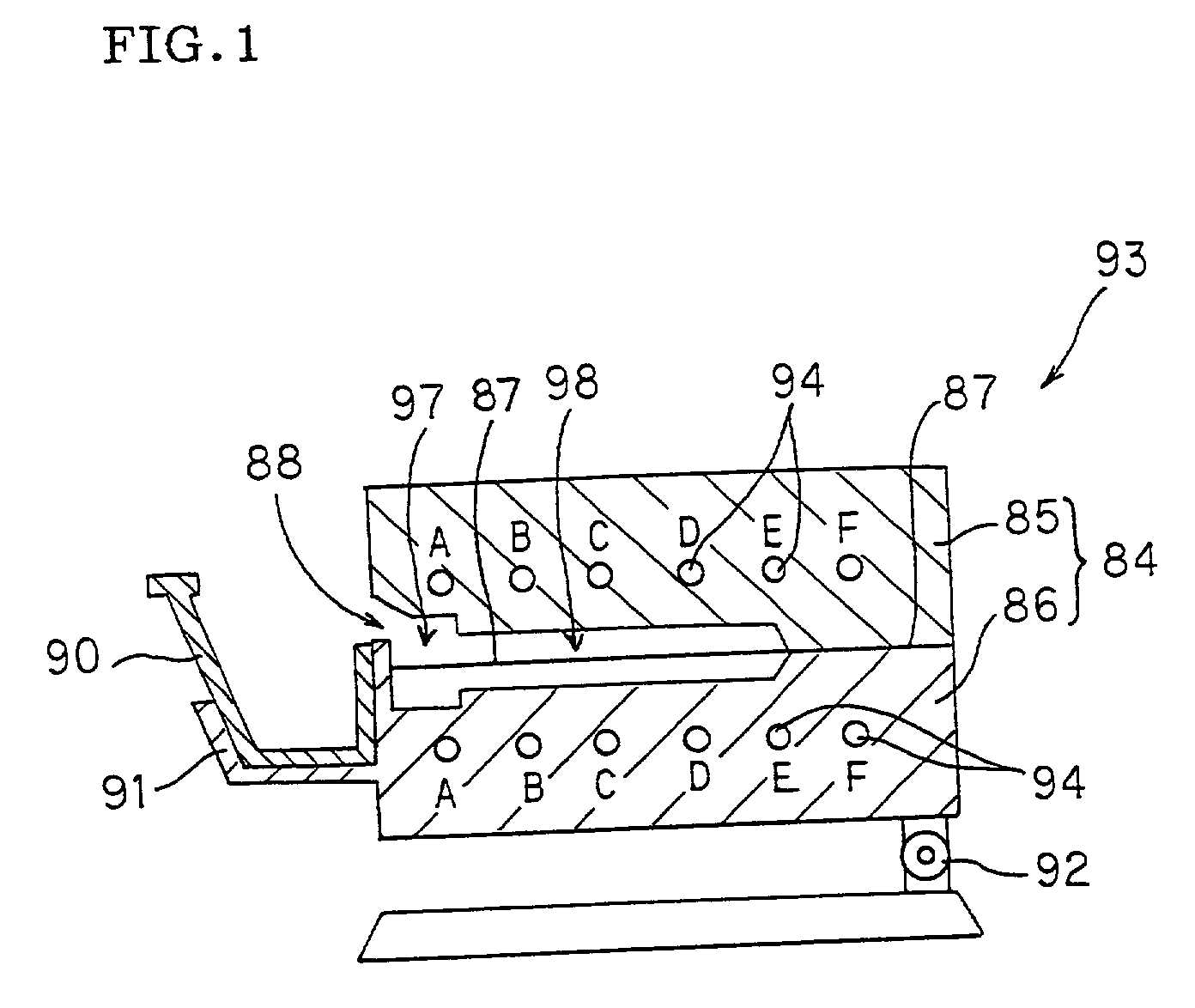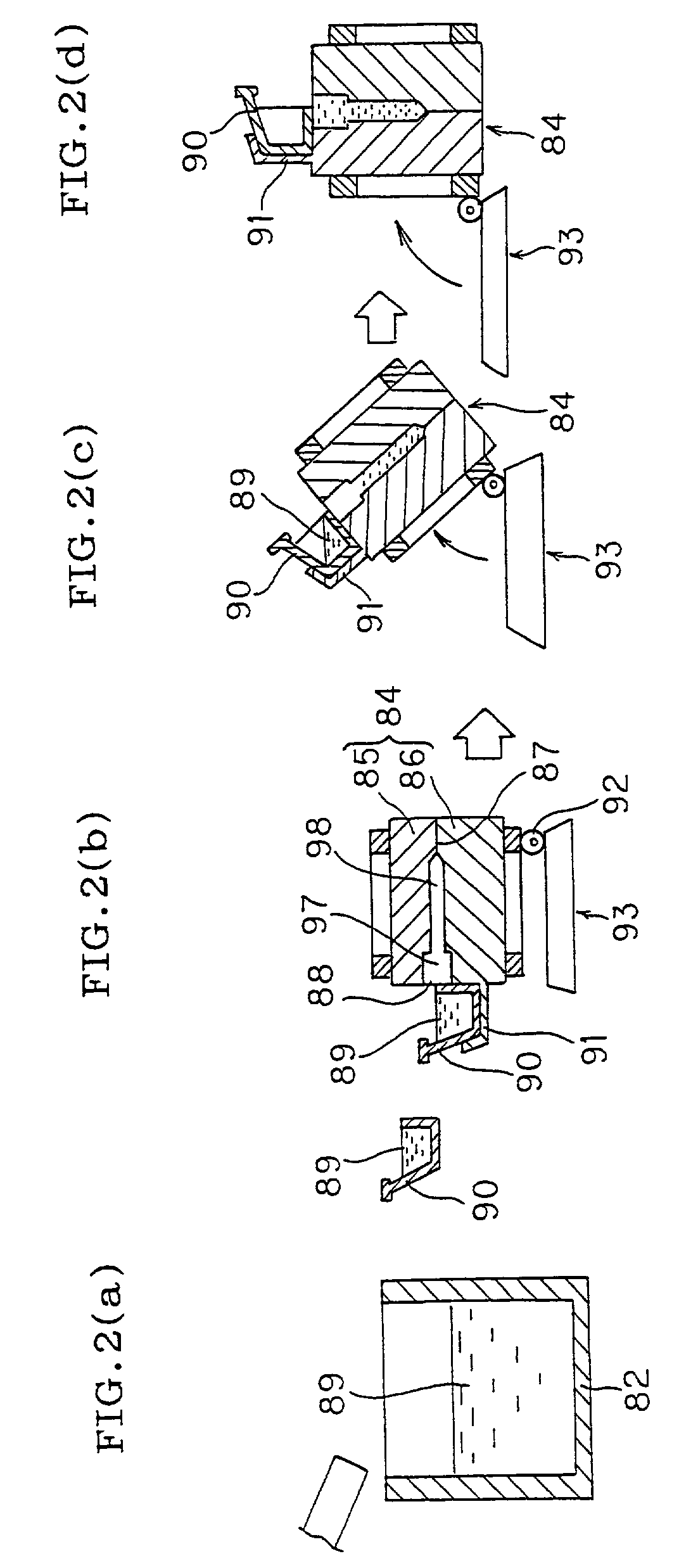Mold for casting forged material, and method for casting forged material
a technology of forged materials and molds, which is applied in the direction of molten metal conveying equipment, molten metal supplying equipment, manufacturing tools, etc., can solve the problems of high cost, difficult to use cast products for automobile parts, and limited improvement of mechanical strength
- Summary
- Abstract
- Description
- Claims
- Application Information
AI Technical Summary
Benefits of technology
Problems solved by technology
Method used
Image
Examples
Embodiment Construction
[0038] Now, embodiments of a mold for casting a forged material, an apparatus for casting a forged material and a method for casting a forged material according to the invention will be described in detail. The invention is not limited to the embodiments, but various changes, modifications, and improvements may be made based on knowledge of those skilled in the art within the scope of the invention.
[0039] For example, an aluminum product that is produced by forging an aluminum alloy will be described as a typical metal product in the detailed description hereinafter. However, the present invention relates to a mold for casting a forged material, an apparatus for a casting forged material, and a method for casting a forged material capable of obtaining, by casting, a preform made of forged material having less internal defects and stable quality from a molten metal of a forged material having poor fluidity and a poor solidification shrinkage property relating to castability, in such ...
PUM
| Property | Measurement | Unit |
|---|---|---|
| temperature | aaaaa | aaaaa |
| thermal conductivity | aaaaa | aaaaa |
| time | aaaaa | aaaaa |
Abstract
Description
Claims
Application Information
 Login to View More
Login to View More - R&D
- Intellectual Property
- Life Sciences
- Materials
- Tech Scout
- Unparalleled Data Quality
- Higher Quality Content
- 60% Fewer Hallucinations
Browse by: Latest US Patents, China's latest patents, Technical Efficacy Thesaurus, Application Domain, Technology Topic, Popular Technical Reports.
© 2025 PatSnap. All rights reserved.Legal|Privacy policy|Modern Slavery Act Transparency Statement|Sitemap|About US| Contact US: help@patsnap.com



